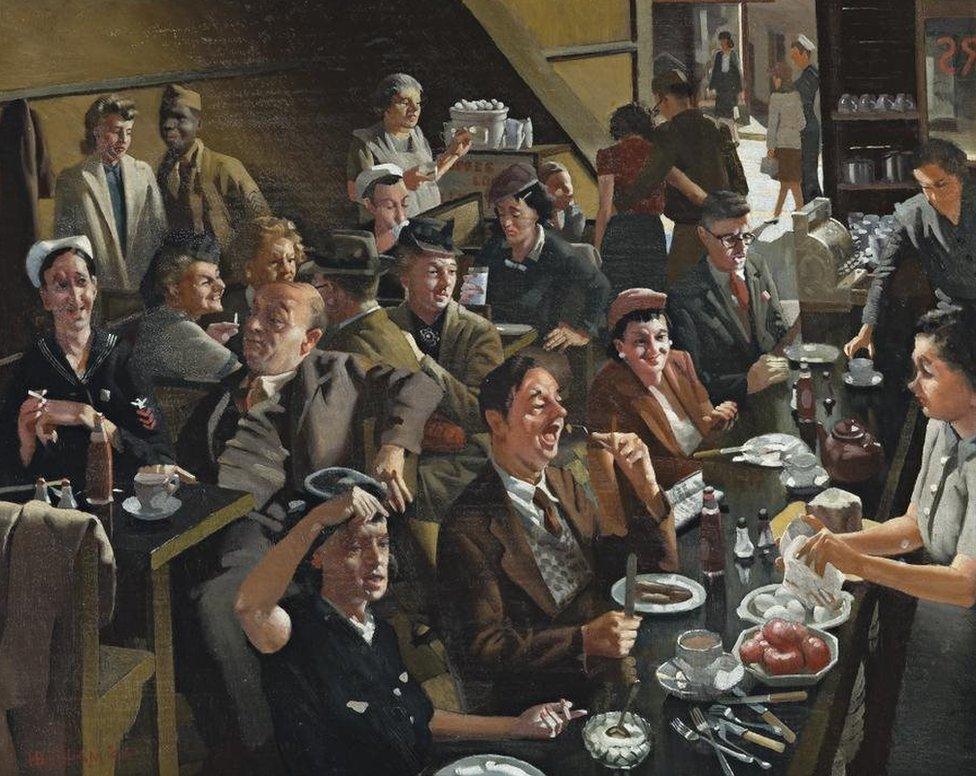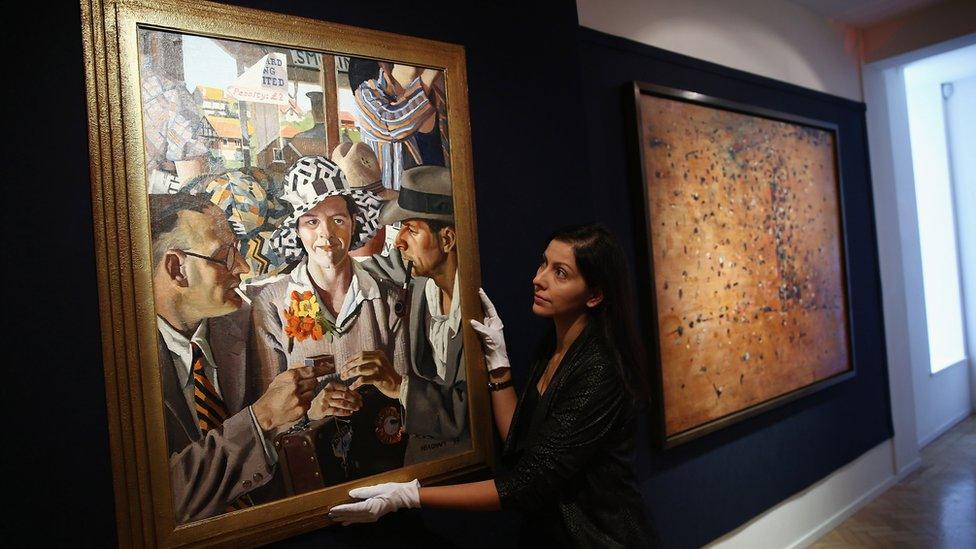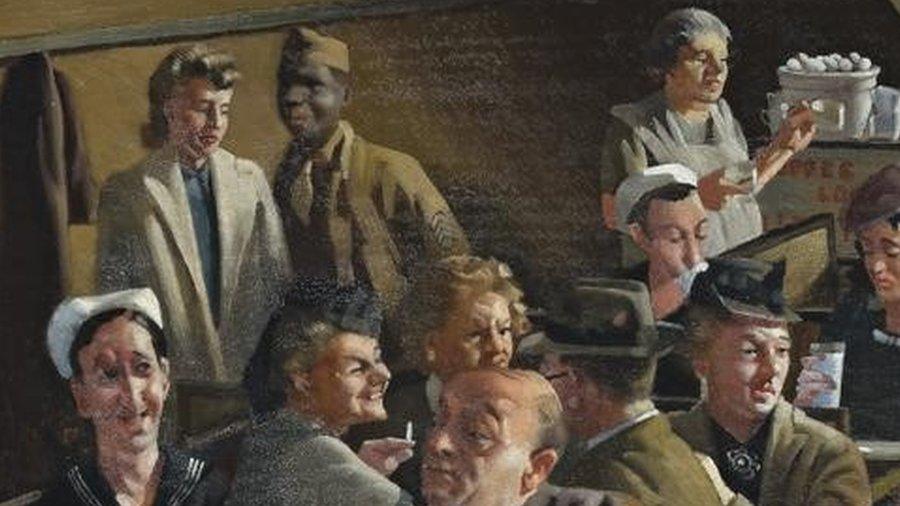Snack Bar painting: Right decision, wrong reason
- Published

Australian artist Herbert Badham's 1944 painting Snack Bar
Here's why the Aussies decided Herbert Badham's oil painting, Snack Bar (1944) should not be allowed to leave the country to hang on a wall in its owner's London pad.
"The subject matter, which graphically records the interaction of different races, associating in congenial circumstances at a time of great danger for Australia is deeply impressive."
Does it? There doesn't appear to be much "interaction" to me. The Americans are depicted as either lecherous chancers (see the facial expression on the woman being chatted up by the seated sailor), or crashing bores (the well-to-do gent at the table makes plain his low opinion of the sailor to his right).
And what do they mean by "races"? Are they talking about Americans and Australians, or the depiction of a single black GI?
If it's the latter, the welcome seems decidedly frosty to me. He's on the outer margins of the room, the girl he is hitting on looks like she wishes he'd go away, and most of the rest of the room has its back to him.
The true unifying element is suggested by the packed snack bar: the food and drink down at the Hasty Tasty in Kings Cross were pretty decent back in 1944, which is fine up to a point - congenial, even - but hardly cause for a chest-puffing expression of national pride.

Badham's paintings of London life - seen here in Travellers (1933) - chronicled the era in a "sometimes jolly" way
As a piece of socio-political art, it's hardly Guernica. Nor is it on a par with the early 20th Century paintings of Walter Sickert, whose depictions of Camden Town's more "colourful" characters informed, in part, Herbert Badham's realist aesthetic.
Sickert was doing with paint what Dickens had done with words: that is chronicling the underbelly of London life. Badham's take on Sydney's urban interior was nothing like as dark.
He had a similar interest in the everyday, in the bars, and shops, and street scenes of the city, but where Sickert's paintings contained a sense of menace, Badham's presented a largely benign, sometimes jolly, world.
But that doesn't mean they aren't worthy of our attention or respect.
The way in which he groups his characters in Snack Bar is impressive, as is his confident handling of light and form, and sense of rhythm. Which is why, I imagine, the painting sold for around four times its estimate at auction last year.
It's a decent work of art by a largely underappreciated Australian artist whose slightly naïve take on modernist realism has aged well.
I don't think Snack Bar merits a national export ban on the basis of its narrative content, but I do think it should remain in the country for its technical and aesthetic qualities.
- Published13 September 2016
